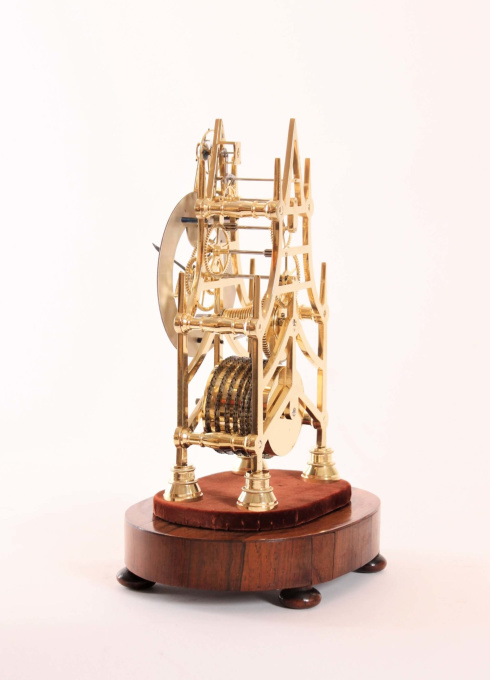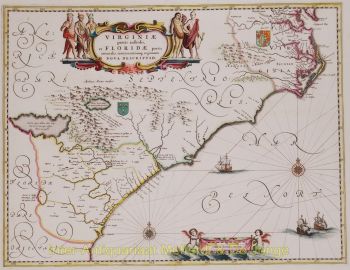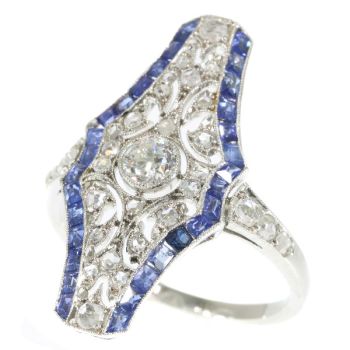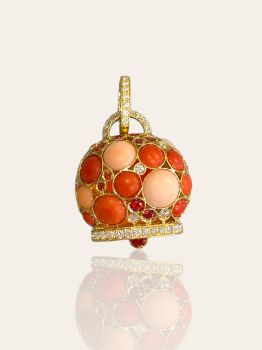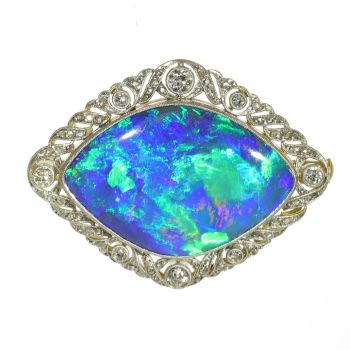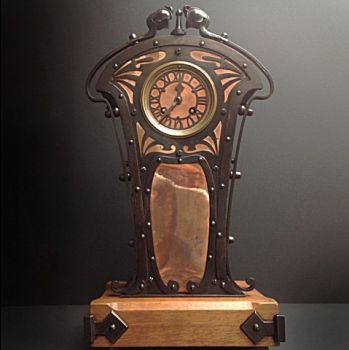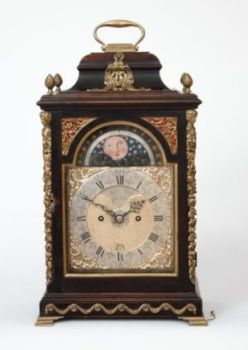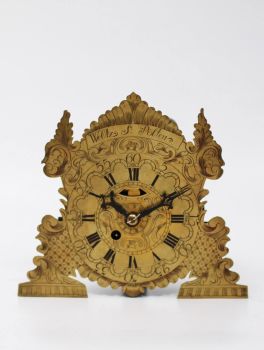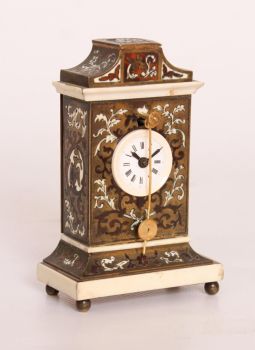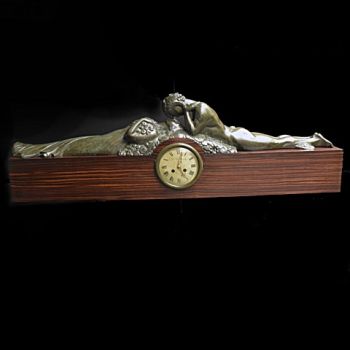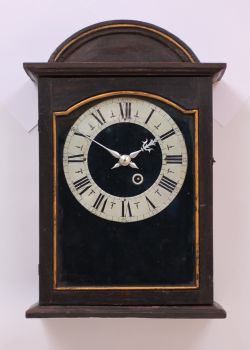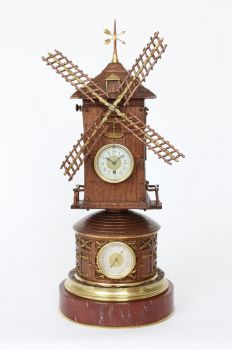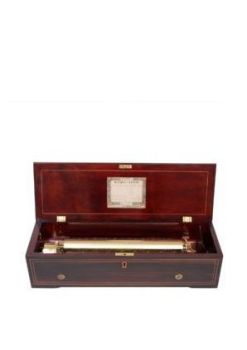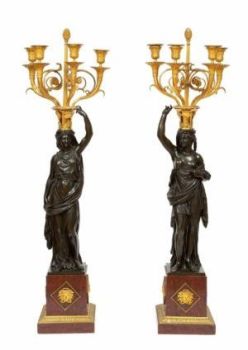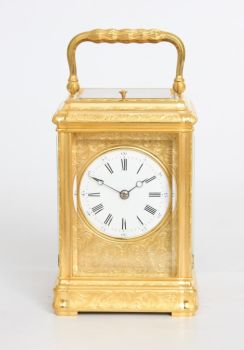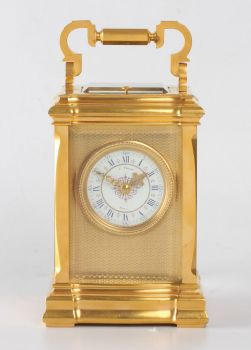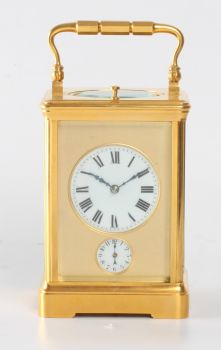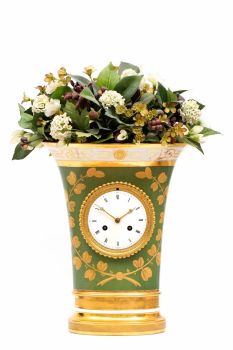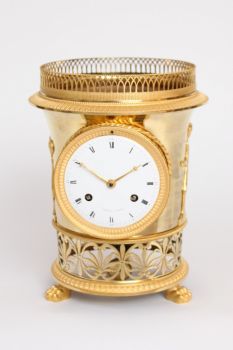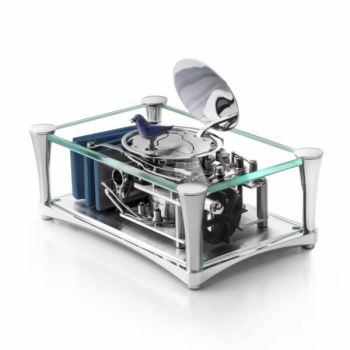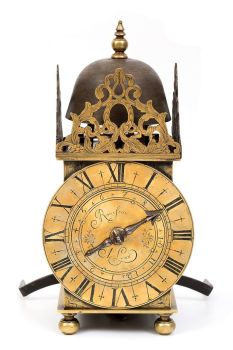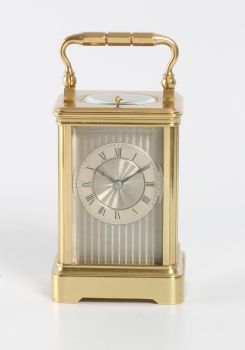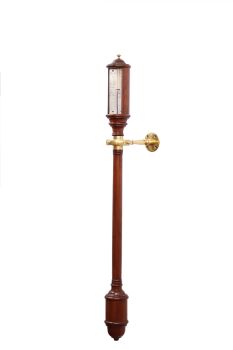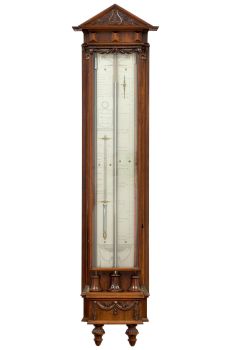Un piccolo orologio scheletrato inglese in ottone con bilanciere, circa 1840 1840
Artista Sconosciuto
37 ⨯ 18 ⨯ 14 cm
Attualmente non disponibile tramite Gallerease
- A proposito di opere d'arteThe chapter ring
The 10-cm engraved silvered chapter ring has Roman numerals and a seconds subsidiary under XII. The Breguet hands are made blued steel.
The movement
The substantial skeletonized plates have Gothic pinnacles and are connected with well turned baluster pillars. The movement is driven by a spring barrel with fusee and chain. It can run eight days on a winding. It is being regulated by a plain balance in combination with an English lever escapement which is a fairly rare feature for skeleton clocks.
The case
The on Gothic architecture inspired frame is raised on four turned feet and is placed on an oval rosewood base on flat feet. The clock is covered by a glass dome. On the bottom is a hand written label inscribed; .. clock was beque(thed) to Robert Whitmore by Admiral the Hon.ble Sir Courtenay Boyle May 1844. - A proposito di opere artista
Può succedere che un artista o un creatore sia sconosciuto.
Alcune opere non sono determinate da chi sono state realizzate o sono state realizzate da (un gruppo di) artigiani. Esempi sono statue dell'antichità, mobili, specchi o firme non chiare o leggibili ma anche alcune opere non sono affatto firmate.
Inoltre puoi trovare la seguente descrizione:
•"Attribuito a …." A loro avviso probabilmente opera dell'artista, almeno in parte
•“Studio di ….” o “Officina di” A loro avviso un'opera eseguita nello studio o nella bottega dell'artista, eventualmente sotto la sua supervisione
•“Cerchio di…” A loro avviso un'opera del periodo dell'artista che mostra la sua influenza, strettamente legata all'artista ma non necessariamente al suo allievo
•"Stile di..." o "Seguace di..." A loro avviso un'opera eseguita nello stile dell'artista ma non necessariamente da un allievo; può essere contemporaneo o quasi contemporaneo
•“Modalità di…” A loro avviso un'opera nello stile dell'artista ma di epoca successiva
•"Dopo …." A loro avviso una copia (di qualsiasi data) di un'opera dell'artista
•“Firmato…”, “Datato…” o “Iscritto” A loro avviso l'opera è stata firmata/datata/inscritta dall'artista. L'aggiunta di un punto interrogativo indica un elemento di dubbio
•"Con firma....", "Con data...", "Con iscrizione..." o “Riporta firma/data/iscrizione” a loro avviso la firma/data/iscrizione è stata aggiunta da qualcuno diverso dall'artista
Artwork details
Related artworks
- 1 - 4 / 12
Artista Sconosciuto
Een Gotische zuidelijke Nederlanden wandklok1580 - 1590
Prezzo su richiestaNico van den Assem restauratie
1 - 4 / 24


